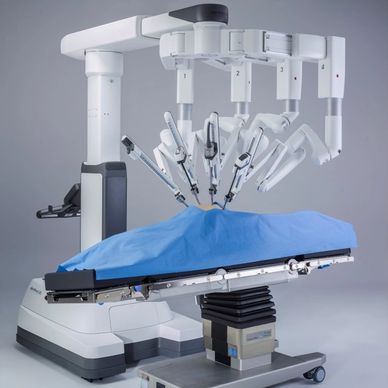Robotic Surgery

When medication and non-invasive procedures are unable to relieve symptoms, surgery remains the accepted and most effective treatment for a range of gynecologic conditions. These include, but are not limited to, cervical and uterine cancer, uterine fibroids, endometriosis, uterine prolapse, and menorrhagia or excessive bleeding.
Open surgery
With open surgery, a large incision is made in your abdomen – large enough for your surgeon to fit his/her hands and instruments inside your body. For generations, open surgery has been the standard approach to many gynecologic procedures and is still used today. However, with open surgery, there are certain drawbacks and trauma to the body due to the large incision.
There are less invasive surgical options for many women facing gynecologic surgery.
Display real testimonials
Minimally INvasive surgery
Are your customers raving about you on social media? Share their great stories to help turn potential customers into loyal ones.
Minimally INvasive surgery
Minimally INvasive surgery
Minimally INvasive surgery
The most common minimally invasive surgery is laparoscopy. Instead of a large open incision, surgery is done through a few small incisions using a tiny camera and long, thin surgical instruments. The camera takes images inside your body and those images are sent to a video monitor in the operating room which guides surgeons as they operate.
da Vinci surgery
Minimally INvasive surgery
da Vinci surgery
.da Vinci Surgery is another minimally invasive option for women facing gynecologic surgery. With da Vinci, surgeons make just a few small incisions - similar to traditional laparoscopy. The da Vinci System features a magnified 3D high-definition vision system and special wristed instruments that bend and rotate far greater than the human wrist. As a result, da Vinci enables your surgeon to operate with enhanced vision, precision, dexterity and control.
Minimally INvasive surgery
da Vinci surgery
Copyright © 2025 ObGyne Associates of Libertyville - All Rights Reserved.
.jpg/:/cr=t:0%25,l:0%25,w:100%25,h:68.17%25/rs=w:515,h:234,cg:true)
Welcome Our Newest Physicians to the Team
We're thrilled to introduce Dr. Brierton and Dr. Davis to our practice! These talented physicians bring fresh perspectives and the latest medical training to our team, ready to provide you with exceptional care at every stage of life. Schedule with them today!
This website uses cookies.
We use cookies to analyze website traffic and optimize your website experience. By accepting our use of cookies, your data will be aggregated with all other user data.
